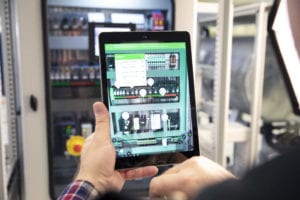If you build correctly, you’ll keep the wolf at your door from coming in. That’s true in fairy tales and in the real world.
Building things properly in the case of a low-voltage switchboard can be a challenge. There are standards to consider, such as IEC 61439. Those standards undergo updates periodically, which can make it difficult to ensure compliance. Adding to the challenge, technology is marching on. That can be seen, for instance, in the proliferation of low-voltage networking and control components.
In this series of four posts, I will discuss a systematic way to deal with these challenges when building a low-voltage switchboard. By following a series of steps, you can ensure that no literal or figurative wolf thing can blow things down – or up.
What you must do in the case of electrical switchboard is
- Chose components based on technical and other considerations
- Deliver, store and prepare components
- Assemble enclosures
- Take care in constructing power busbars, and
- Install devices
That seems simple enough but can be complicated because many factors have to be considered. For instance, take design enclosures. They must provide the right degree of protection in terms of IK rating for mechanical impact resistance as per IEC 62262 and IP designation for electrical disturbance resistance as per IEC 60529.
How much protection is required will be determined, to a large degree by the characteristics of the room in which the switchboard will be installed. As a result, what works in one situation may not in another.
The next set of steps will take you through what’s needed to bring the switchboard to the point of completion. These include:
- Making power connections
- Installing auxiliary and low-power circuits, and
- Labeling and marking of the switchboard
That all seems straightforward enough. But, IEC 61439 requires all switchboards be identified in a durable, visible and legible manner. Meeting all three of these mandates can require some thought and planning.
Now you have a switchboard that’s ready to go – almost. What is needed to get the completed project to the customer are some quality checks and the shipping of the switchboard to the customer site. Specifically, the steps are:
- Factory quality inspection
- Packing
- Handling and transportation
- On-site installation and commissioning
The first of these includes the routine inspection carried out on every switchboard shipped. Exactly what should be inspected to assure quality needs to be both spelled out and carefully considered.
In my next post, I’ll go over the first set of steps above in more detail. Subsequent posts will cover the next two groups.
For more information, please visit our panel builder’s information page. There you’ll find a wealth of information on the topics mentioned above.


